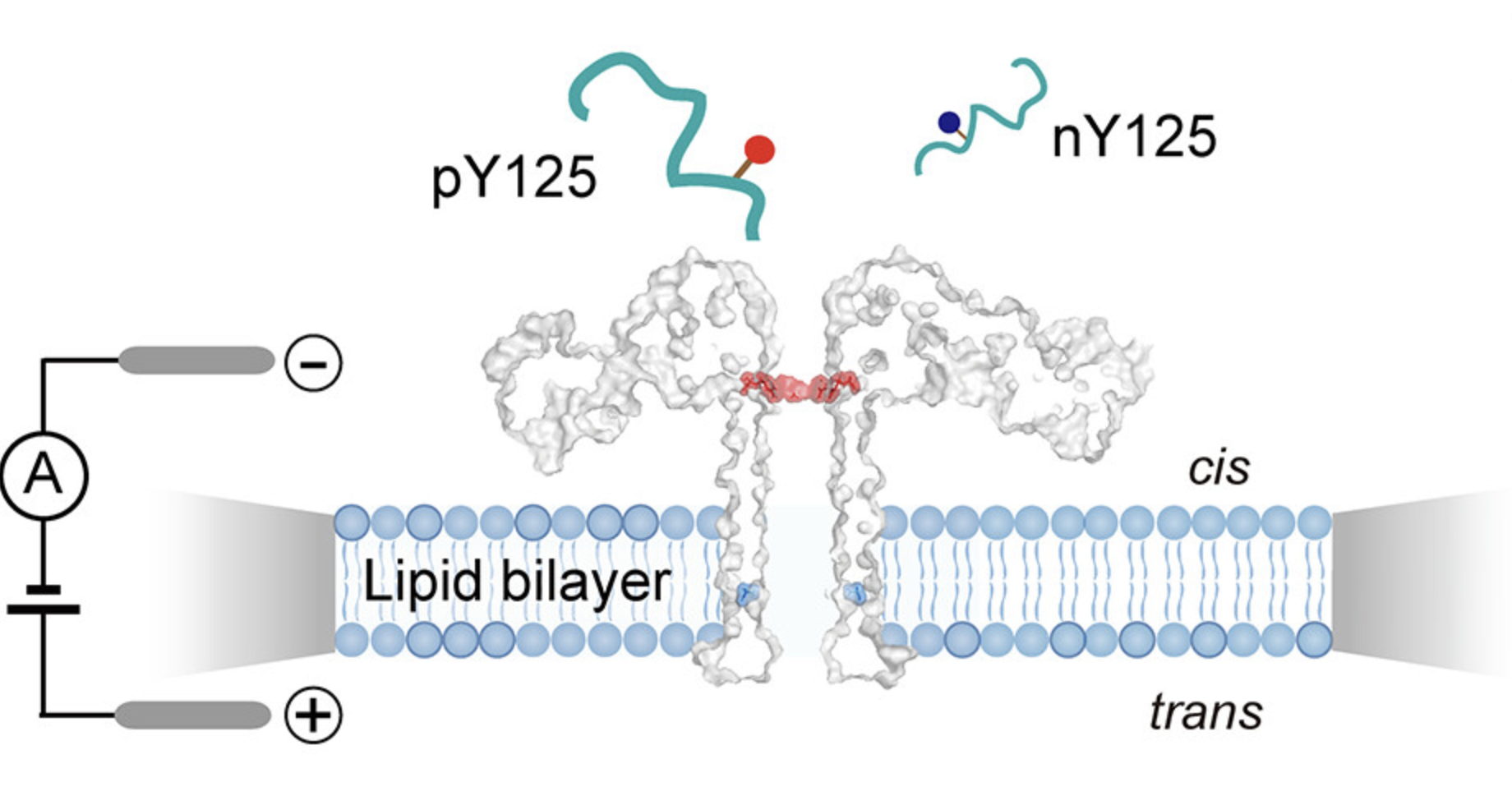Towards early diagnosis of neurodegenerative diseases with nanopore detection and AI
Prof. Chan Cao, Department of Analytical and Inorganic Chemistry, University of Geneva, in collaboration with a team from EPFL, has developed a new method for detecting various protein modifications by combining the use of nanopore detection and artificial intelligence. This method has been published in ACS Nano and is also featured on the journal's cover.

Nanopore detection: an electric current is generated by the passage of a single molecule through the nanoscale pore. Figure reproduced from ACS Nano 2024, 18, 2, 1504-1515, available under license CC-BY-SA 4.0.
A new group in the Department of Analytical and Inorganic Chemistry
Recently established at the University of Geneva, Prof. Chan Cao's group specializes in the development of single-molecule bioanalysis, particularly nanopore detection. This approach is based on the reading of an electric current generated by the passage of a single molecule through a nanoscale pore. These pores are either biological assemblies of proteins embedded in a lipid membrane or fabricated using a solid-state material. The development of nanopore technology is aimed at designing high-resolution sensors for detecting target molecules within complex matrices, as well as de novo sequencing of biopolymers.
Detection of protein modifications at picomolar concentrations
In this new publication, the researchers focus on the post-translational covalent modifications (PTMs) undergone by proteins. These PTMs influence almost every aspect of a cell, from cell signaling to pathogenesis. Some of these PTMs are used as biomarkers for certain neurodegenerative diseases, but their detection remains particularly difficult. By combining nanopore detection and artificial intelligence, the study was able to detect PTMs on alpha-synuclein, a key protein in the development of Parkinson's disease, at very low concentrations.
Promising advances in the diagnosis and treatment of neurodegenerative diseases
This demonstration, under conditions comparable to clinical conditions, shows the relevance of nanopore-based analysis technologies for the early diagnosis of disease.
This demonstration gives cause for great optimism, given the versatility of nanopores in the detection of many types of PTMs. Beyond diagnosis, this type of method may also facilitate the development of new therapies for Parkinson's and other neurodegenerative diseases.
January 29, 2024
Lastest news
